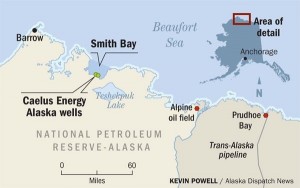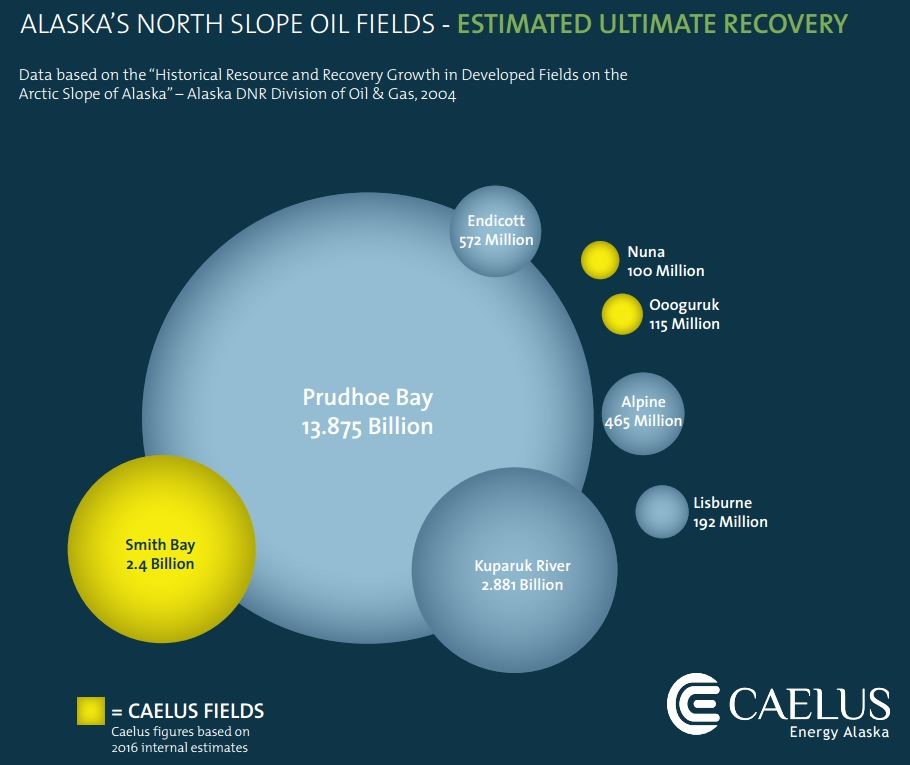Over the past two weeks, the Alaska Dispatch News has written several stories about the discovery of an offshore oil deposit in Smith Bay, Alaska. Smith Bay is on the North Slope of Alaska (Figure 1) which is a region historically rich with oil. However, the region has been on the decline in terms of oil production with the Trans-Alaska Pipeline System carrying only 500,000 barrels per day or about one fourth of its designed maximum capacity. The company released a statement on October 5th, estimating the site could provide an additional “200,000 barrels per day of light, highly mobile oil.” The discovery was hailed as a game-changer by the CEO of Caelus Energy, who expects a multibillion-barrel find and the potential for an additional four-billion barrels in an adjoining deposit. With the company envisioning production on the scale of Kuparuk oil field, the second largest in Alaska, Smith Bay would be subject major development, with an initial 250 wells proposed.

After a few days of feverish excitement, realities began to set in. Development is estimated at around $8-10 billion, including $800 million for a 125-mile underwater pipeline, buried in the seabed to protect it from ice flows. Smith Bay is a very remote location, over 90 miles from the closest neighboring development with oil infrastructure. Moreover, every autumn Smith Bay plays host to migrating bowhead whales, heightening concerns among Inupiat communities who hunt the whales for subsistence and the state environmental regulators. Caelus Energy is also very worried about the future of generous tax credits granted to oil companies starting in 2013. As the two-year slump in oil prices continues to squeeze state coffers, some Alaskan legislators have called for a halt to the estimated $750 million annually in tax breaks to oil companies. Meanwhile, Caelus Energy is already owed about $100 million in tax credits for the exploration of Smith Bay. With all this uncertainty, expectations for timely and effective development of the field, hoped to be within five years, have been tempered. However, due to Smith Bay’s great potential, the development of this field is sure to be a major topic for years to come.

